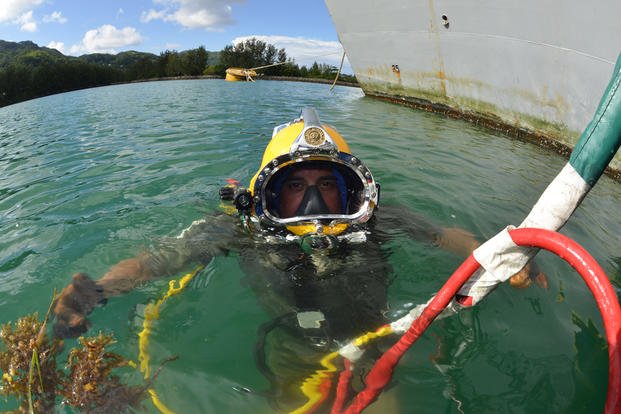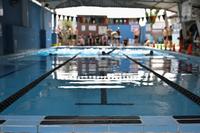Many fitness and pool competency skills must be acquired before attending special ops programs. Navy Dive School is no different, as the selection process to get to and through the training is challenging right from the start. This workout focuses on underwater swim techniques, treading events and swimming conditioning.
This workout should be done as many times as you can get to the pool per week:
Swim a 500-yard warm-up: You can use any stroke for this, but it is wise to start the swim workout with the actual testing distance; that way, you can legitimately say when you take an official Navy physical screening test, or PST, that this is "just a warm-up." That is a powerful sports psychology hack that helps with the pregame jitters and butterflies.
Get used to swimming 500 yards nonstop and eventually doing it all with the testing stroke, which is primarily the Combat Swimmer Stroke (CSS). Now the workout. Note: Never do this or any swim workout alone.
Repeat 10 times.
- Swim 25 yards underwater
- Swim 25 yards freestyle
- Swim 50 yards CSS
- One minute no hand tread (as rest)
Catch your breath before the next set, then repeat.
This version of the 50-50 swim workout will prepare you quickly for the 500-yard PST if you do it 4-5 times a week. But the underwater swim will prepare you specifically for the under-over workouts you will see at Dive School. Under-overs are 25-yard underwater swims, followed by an easy 25-yard free or CSS swim set.
You rest on a 1-minute, 30-second interval and then repeat it several times. Typically, most people get the 50-yard over-under done in about 45-50 seconds, then rest for 40-45 seconds before the next set.
Here are the areas in this swim workout that will help you get accepted into Navy Dive School and complete it as well:
1. The Navy PST
Training for the Navy PST swim will require a level of conditioning that most non-swimming athletes do not naturally have. You need to earn it by swimming several times a week.
Check out PST Prep Training Week, which includes swimming, calisthenics and running to help with needed muscle stamina and run/swim endurance. You can use this new workout to mix into the swimming days from this overall plan. See the video discussion of the Classic Week of Military Special Ops PST Training.
2. Treading
If I told you to swim for 10 minutes, you could do that easily and be winded if trying to get a good time. The same goes for treading. Expect to be winded and tired. Going into any treading event, knowing that is half the battle.
You will struggle but can become proficient at treading with practice and perfecting your kick. Learn how to kick and play with various kicks: the scissor kick (alternating left/right), breaststroke kick and egg-beater kick (see video). For real pros, see any water polo player in action and work on your hip, knee and ankle mobility. (Treading video).
3. Underwater Swimming
Practicing the technique of underwater swimming is a lesson in efficiency. Big, strong pulls, followed by power kicks and tight streamline recovery, make for an efficient underwater swim. Remember, the objective isn't about holding your breath for longer but efficiently crossing the pool in as few strokes as possible. Once you've mastered this, you'll find the 25-yard distance easier than holding your breath and walking. Underwater swim video.
4. General Water Confidence
Technique and swimming endurance are crucial to excelling at the special ops diving challenge. Your time in the pool each week will make all the difference. This single workout can build your swimming skills and help you master the technique needed for Dive School.
There is more to Dive School than this, however. You must still practice swimming with fins, learn scuba diving and add calisthenics to swimming workouts (swim PT). Put it all together, and you can ascend to the level required for these elite military diving programs. After all, when it comes to success, the answer lies in your consistent preparation.
Want to Learn More About Military Life?
Whether you're thinking of joining the military, looking for fitness and basic training tips, or keeping up with military life and benefits, Military.com has you covered. Subscribe to Military.com to have military news, updates and resources delivered directly to your inbox.




















